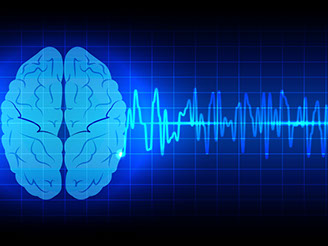
NEUROLOGY
Neurology departments incorporate a cerebrovascular accident unit (Stroke Center), a headache unit, an electroencephalography and epilepsy unit, an electromyography (EMG) unit and a neuro-ophthalmology unit.
DIAGNOSIS AND TREATMENT SERVICES:
Nurology departments provide outpatient and inpatient diagnosis and treatment services. Our departments provide diagnosis and treatment services for diseases including cerebrovascular diseases, acute ischemic strokes, cerebral bleeding, degeneretive diseases, vascular dementia, mobility disorders due to Alzheimer's disease, ALS, etc.; Parkinson's disease, dystonia, dyskinesias, essential tremor, restless legs syndrome, Huntington's chorea, epilepsy, focal, generalized epilepsy, status epilepticus, demyelinating diseases, multiple sclerosis, acute demyelination, encephalomalacia, transverse malacia, central nervous system vasculitis, neuropathies, toxic-metabolic, immune neuropathies, Guillain–Barré syndrome, muscular diseases, neuromuscular junction diseases, myasthenia gravis, headaches, lumbar pain and neck pain, vascular headache, stress headache, cervikogenic headache, temporal arteritis, neuralgia, confusional states, delirium, encephalitis and vertigo.
Our neurology branch also incorporates a neuro-ophthalmology sub division.
Intraoperative Neuromonitoring Unit
Intraoperative neuromonitoring is used to preserve the functions of neural structures including the brain, brain stem, cranial nerves, and peripheral nerves. Depending on the region of the brain or spinal cord that is damaged, the individual may no longer be able to move, feel, hear, or speak. In recent years, intraoperative neuromonitoring is widely used during brain and spinal surgeries to avoid such damage.
The intraoperative neuromonitoring team uses special neurophysiological methods to monitor the functional integrity of neural structures during the procedure in eligible patients and thus, is able to identify a potential injury caused by the surgical procedure at an early stage and alert the surgeon. Most of the times, the surgeon can use this information to modify his surgical strategy and avoid damage to neural tissues. Thus, it is possible to prevent potential postoperative damage of critical functions including speech, hearing, or sensory abilities.
Which patients need intraoperative neuromonitoring?
Patients benefit from intraoperative neuromonitoring during surgical procedures that involve a high risk of injury to neural tissues. This method is most commonly used during brain, nerve, and spinal surgery as well as procedures performed on the brain and spinal cord.
Our intraoperative neuromonitoring team consists of experienced neurologists and technicians who have been trained in neurophysiology. This team joins the surgeon during procedures that involve a high risk of injury to the neural tissues.
The intraoperative neuromonitoring team closely collaborates with the surgeon and anesthesiologist during the surgery.
Neuro-Ophthalmology
This unit addresses diseases involving the optic nerves and the optic tract that provide the connection between the eyes and the brain.
Child Neurology
It is a branch of science that deals with neurological diseases in childhood (0 - 18 years). Particularly, the brain deals with diseases of the nervous and nervous system. For example, epilepsy (epilepsy), childhood headaches, muscle diseases, developmental retardations, speech disorders, such as many patients are evaluated in the field of child neurology.
Why Child Neurology?
Contrary to what you think, children are not smaller than adults. Diseases of the pediatric age group and the causes of diseases in this age group are very different from the adults and the development of the science of pediatric neurology is needed. For example, normal and abnormal movements of the babies should be monitored every month, as the reflexes may differ, and the EEGs of these children can be noticed even in newborn babies, especially in their daily ages. Similarly, experienced approaches are needed in terms of dosage and medication that can be used in children's age groups.
If we look at the disease groups in which the pediatric neurology is concerned, there is a very large group of patients.
Some of these;
- Childhood epilepsy (Sara)
- Fiery Transfer
- Childhood headaches
- Neurological follow-up of risky infants
- Demyelinating diseases
- neuropathies
- Muscle diseases
- Developmental delay
- Autism
- Speech disorders
- Movement disorders
- Cerebral palsy (Cerebral palsy)
- Sleeping disorders
- NeuroCutaneous diseases
- Pseudotumor cerebri
- Hypotonic Baby (Loose baby)
- Neurometabolic Diseases